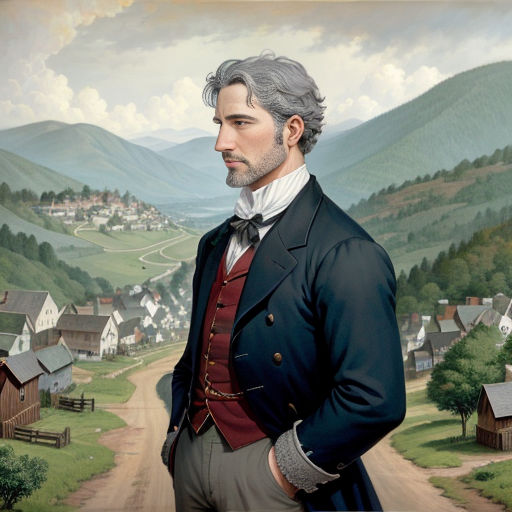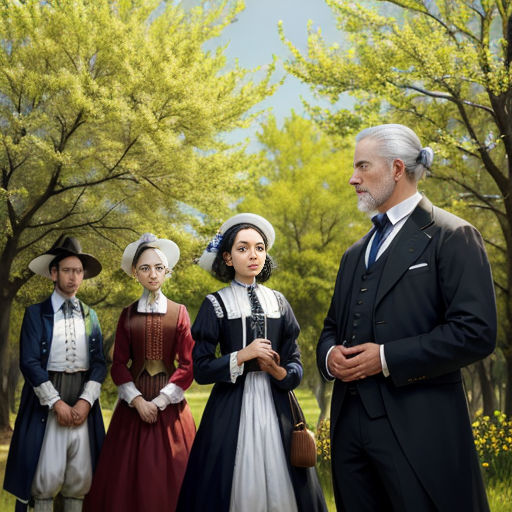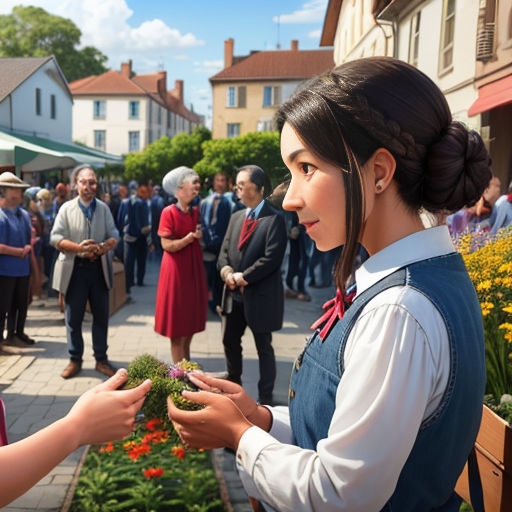
Surviving the New World
By Storybird

29 Oct, 2023

In the late 1700s, two Massachusetts colonies, Tyngsboro and Springfield, faced daunting challenges. In Tyngsboro, the settlement's leader, Jonathan, was a stern, practical man who valued hard work and dedication.

In Springfield, the colony was led by a wise, compassionate woman named Eliza. She was known for her strategic thinking and her ability to inspire her people.

Jonathan's approach was one of discipline and order. He believed that only through hard work and strict rules could they survive in the harsh New England environment.

Eliza, on the other hand, believed in the power of community and cooperation. She encouraged her people to work together, share resources, and support one another.

Jonathan's strict rules and regulations caused tension among the Tyngsboro colonists. Some felt that their leader was too harsh and unyielding.

In contrast, Eliza's compassionate leadership style fostered a strong sense of community in Springfield. Her people felt valued and supported, which boosted morale.

As the harsh New England winter set in, Tyngsboro's strict order and discipline were put to the test. The colonists struggled to stay warm and fed.

Springfield, meanwhile, faced the same harsh conditions. But Eliza's leadership had fostered a strong sense of community, and they faced the winter together.

Despite the hardships, Jonathan remained unyielding. He continued to enforce his strict rules, believing that discipline would see them through the winter.

Eliza, however, took a different approach. She encouraged her people to share resources, help one another, and stay strong together.

As the winter wore on, tensions in Tyngsboro grew. The colonists began to question Jonathan's leadership, and morale was low.

In Springfield, however, the sense of community was stronger than ever. Eliza's compassionate leadership had fostered a spirit of cooperation that saw them through the harsh winter.

When spring finally arrived, Tyngsboro was a changed place. The colonists were tired and disillusioned, their faith in Jonathan's leadership shaken.

Springfield, on the other hand, emerged from the winter stronger than ever. Eliza's leadership had seen them through the harsh conditions, and they were ready to face whatever came next.

As the years went on, the two colonies continued to face challenges. But the experiences of that first harsh winter had shaped their futures in profound ways.

In Tyngsboro, Jonathan's strict leadership style gradually softened. He began to value the input of his colonists and learned the importance of flexibility.

In Springfield, Eliza's compassionate and cooperative leadership continued to strengthen the community. Her people thrived, and they faced the challenges of the New World together.

By the end of the 1700s, both colonies had grown and prospered. Tyngsboro, under Jonathan's more flexible leadership, had become a successful farming community.

Springfield, under Eliza's continued compassionate leadership, had become a thriving trade center. Her people worked together to build a prosperous and harmonious community.

The lessons of survival learned by the Tyngsboro and Springfield colonies in the 1700s are still relevant today. They remind us of the importance of flexibility, compassion, and community in overcoming adversity.

Jonathan's transformation from a stern, inflexible leader to a more understanding one, taught us that flexibility can lead to growth and prosperity.

Eliza's consistent compassionate and cooperative leadership showed us that community strength is built on mutual support and understanding.

As time passed, Tyngsboro and Springfield continued to grow and evolve, their stories a testament to the resilience and adaptability of the human spirit in the face of adversity.

The legacy of Jonathan and Eliza's leadership lives on in the thriving communities of Tyngsboro and Springfield today, a testament to their enduring wisdom and resilience.

Today, the stories of these two colonies serve as a beacon of hope, reminding us that with resilience, flexibility, compassion, and community, we can overcome any challenge that comes our way.

The tale of Tyngsboro and Springfield is one that resonates through time, a testament to the strength of the human spirit and the power of community.

It is a story of survival, resilience, and transformation; a story that continues to inspire us today as we face our own challenges in the modern world.

So, as we look back on the trials and triumphs of the Tyngsboro and Springfield colonies, we are reminded of the enduring power of human resilience, flexibility, compassion, and community.

And we are inspired to face our own challenges with the same strength, resilience, and spirit that helped these two colonies survive and thrive in the New World.

Thus, the story of Tyngsboro and Springfield, of Jonathan and Eliza, is a timeless tale of survival and resilience, a testament to the enduring strength of the human spirit.